Pattern Mixing for Different Body Types
Pattern mixing can enhance your natural silhouette when tailored to your body type. By choosing the right combinations of patterns, scales, and placements, you can create flattering looks that highlight your best features.
Using Vertical Patterns to Elongate the Frame
Vertical patterns, such as stripes or elongated geometric designs, are excellent for creating the illusion of height and a slimmer silhouette. These patterns draw the eye upward and downward, making the frame appear longer and leaner. For optimal effect, choose patterns with consistent spacing and avoid overly busy designs that may distract from the vertical flow. Pairing vertical patterns with well-fitted clothing, like a striped jumpsuit or a tailored pinstripe suit, enhances the elongating effect while maintaining a polished and stylish look.
Balancing Proportions with Strategic Pattern Placement
Strategic pattern placement is key to creating balanced proportions in an outfit. Use patterns to draw attention to areas you want to highlight and minimize focus on others. For example, wearing bold patterns like florals or geometric designs on the upper body can emphasize the shoulders and chest, while keeping the lower body in solid or subtle patterns creates balance. Conversely, patterned pants or skirts paired with a neutral top can highlight the legs. Varying the scale of patterns—larger for focal areas and smaller for secondary ones—helps achieve a harmonious, proportionate look.
Highlighting Features with Bold Patterns
Bold patterns are a powerful tool to draw attention to specific areas and highlight your best features. To emphasize the upper body, choose a vibrant printed blouse or jacket paired with neutral bottoms. For those wanting to showcase their legs, opt for bold patterned pants or skirts while keeping the top understated. Large-scale designs like florals, animal prints, or striking geometrics naturally attract the eye, making them ideal for creating focal points. Balance bold patterns with solid or subtle elements to ensure the outfit remains harmonious and stylish.
Avoiding Overwhelming Looks for Petite Frames
To ensure pattern mixing complements petite frames, focus on smaller-scale prints that match your proportions. Opt for delicate patterns like tiny florals, polka dots, or narrow stripes, which add visual interest without overwhelming your frame. Keep the overall outfit streamlined by limiting the number of patterns or balancing them with solids. Monochromatic patterns or those within a cohesive color palette elongate the silhouette, making the look polished and proportionate. Accessories, like a patterned scarf or bag, can also introduce variety without overpowering your stature.
Mistakes to Avoid in Pattern Mixing
Wearing too many patterns at once can overwhelm the look and detract from its overall harmony. To avoid this, limit your outfit to two or three patterns, ensuring they complement each other in scale, color, or theme. For instance, pair a bold floral top with subtle striped pants and introduce a small accent, like a patterned scarf, for balance. Neutral elements or solid pieces can anchor the outfit, providing visual rest and preventing a chaotic appearance. Thoughtful coordination ensures a stylish and cohesive ensemble.
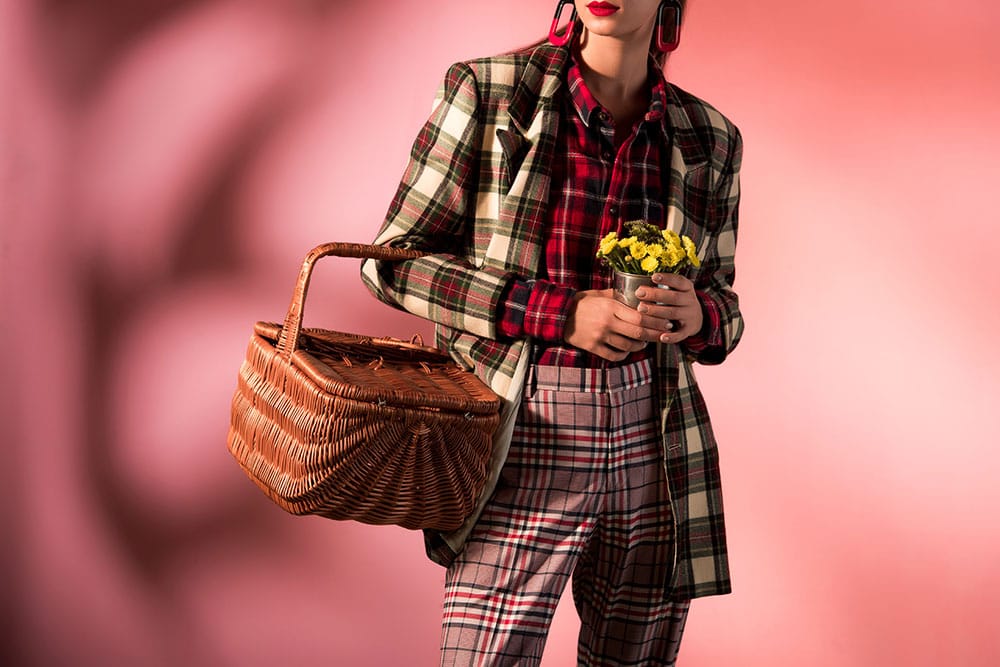
Overloading on Too Many Patterns at Once
Wearing too many patterns at once can overwhelm the look and detract from its overall harmony. To avoid this, limit your outfit to two or three patterns, ensuring they complement each other in scale, color, or theme. For instance, pair a bold floral top with subtle striped pants and introduce a small accent, like a patterned scarf, for balance. Neutral elements or solid pieces can anchor the outfit, providing visual rest and preventing a chaotic appearance. Thoughtful coordination ensures a stylish and cohesive ensemble.
Clashing Color Schemes
Clashing color schemes can disrupt the harmony of an outfit, especially when mixing patterns. To avoid this, focus on a cohesive palette by selecting patterns that share one or two common colors. Alternatively, use complementary colors from the color wheel, like blue and orange, for a vibrant yet balanced look. Neutral tones can act as anchors, toning down bold hues and providing a unifying element. Balancing colors thoughtfully ensures that patterns work together seamlessly rather than competing for attention.
Ignoring Scale and Proportion of Patterns
Overlooking the scale and proportion of patterns can lead to an unbalanced and visually overwhelming outfit. To create harmony, combine patterns of different scales—pair a large-scale floral print with a smaller, subtle stripe or polka dot. This contrast ensures each pattern stands out without clashing. Additionally, consider your body proportions; petite frames benefit from smaller prints, while taller figures can carry larger designs. Thoughtful attention to scale ensures a balanced, flattering, and cohesive look.
Forgetting to Incorporate Solid Elements
Neglecting solid elements when mixing patterns can make an outfit feel overwhelming and chaotic. Solids act as a grounding force, providing visual rest and balance amidst bold designs. Incorporate solids through staple pieces like a plain blazer, trousers, or accessories, such as a neutral scarf or bag. For example, pairing a patterned top and skirt with a solid jacket creates harmony and focus. Including solid elements ensures that the patterns complement rather than compete, resulting in a polished and cohesive look.
Not Considering the Occasion or Setting
Failing to consider the occasion or setting when mixing patterns can result in an outfit that feels out of place. For formal or professional environments, opt for subtle combinations like pinstripes with small checks in neutral tones. In casual or creative settings, bolder pairings like florals with geometric prints are more appropriate. Tailoring your pattern choices to the context ensures your outfit aligns with the atmosphere while still reflecting your personal style. Thoughtful consideration of the setting enhances both confidence and appropriateness.
- Add a subsection on industry trends, including influencer-driven popularity like Chiara Ferragni’s mixed patterns.
- Highlight brand trends such as Versace’s baroque floral combinations and Gucci’s geometric and animal prints.
7. Advanced Pattern Mixing Techniques
Layering multiple patterns in one outfit can create a dynamic and stylish look when done thoughtfully. Start with a cohesive color palette to tie the patterns together, such as pairing a striped shirt with a floral skirt and a plaid scarf in similar tones. Vary the scale of the patterns—combine larger designs with smaller, subtler ones to avoid visual overload. Incorporate neutral or solid layers, like a plain jacket or trousers, to anchor the outfit and provide balance. With careful coordination, layering patterns adds depth and personality without feeling chaotic.
8. Experimenting with Pattern-on-Pattern Accessories
Incorporating pattern-on-pattern accessories is a fun way to elevate your outfit while adding layers of visual interest. To avoid clashing, keep a cohesive theme by matching colors or scales between the accessories and clothing. For example, a floral scarf paired with a striped blouse works well if they share similar hues. Accessories like patterned shoes, bags, or hats can introduce subtle contrast when paired with complementary prints. Balancing bold and subtle elements allows you to experiment creatively without overwhelming the overall look.
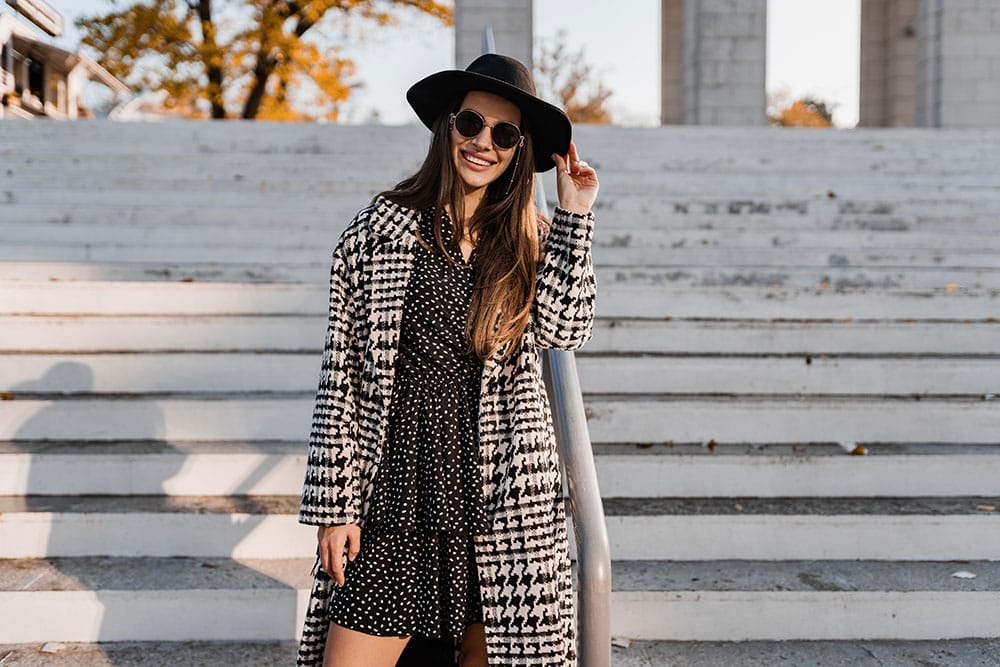
9. Breaking the Rules: When and How to Push Boundaries
Fashion is as much about creativity as it is about rules, and knowing when to break them can lead to striking and unique outfits. To push boundaries with pattern mixing, embrace bold contrasts, such as combining clashing prints like florals with animal prints or polka dots with abstract designs. Use a unifying element, like color or texture, to anchor the look and maintain some balance. Breaking the rules works best in settings that encourage creativity, such as casual events or fashion-forward spaces. Confidence is key—owning your choices makes even the most unconventional combinations look intentional and stylish.
10. Combining Vintage Patterns with Modern Designs
Mixing vintage patterns with modern designs creates a unique blend of nostalgia and contemporary style. Pair timeless prints like polka dots, paisleys, or retro florals with sleek, minimalist patterns or geometric shapes for a fresh and balanced look. For example, a vintage-inspired floral skirt matched with a modern striped blouse creates an elegant yet trendy ensemble. Keeping the color palette cohesive and incorporating neutral elements, like solid accessories or tailored pieces, helps tie the look together seamlessly. This combination celebrates the charm of the past while embracing the versatility of modern fashion.
11. Inspiration and Style Icons
Celebrity Looks: Examples of Inspiration and Style Icons
Celebrities often push the boundaries of fashion, providing inspiration for creative pattern mixing. Style icons like Zendaya and Harry Styles are celebrated for their bold use of patterns. Zendaya frequently pairs contrasting designs, like floral suits with geometric blouses, showcasing balance through cohesive color palettes. Harry Styles is known for combining plaids, polka dots, and stripes in vibrant hues, proving that confidence and playfulness can redefine masculine fashion.
Sarah Jessica Parker often mixes vintage-inspired florals with modern prints, blending nostalgia with contemporary elegance, while Rihanna incorporates daring animal prints and abstract designs into her streetwear looks. These celebrities demonstrate that thoughtful coordination, scale balancing, and unified tones are key to mastering the art of pattern mixing, making them excellent sources of inspiration.
Iconic Pattern-Mixing Outfits
Italian fashion is synonymous with boldness and creativity, and its icons have mastered the art of pattern mixing. Here are a few standout examples:
- Versace’s Bold Runway Looks: Gianni Versace popularized mixing baroque patterns with animal prints, creating vibrant, luxurious ensembles that defined 1990s fashion. Today, Donatella Versace continues this legacy with striking combinations of florals, geometrics, and metallic accents.
- Dolce & Gabbana’s Sicilian Influence: Dolce & Gabbana frequently mix Sicilian-inspired florals, polka dots, and religious motifs in their collections, celebrating Italy’s heritage through a rich tapestry of patterns.
- Chiara Ferragni’s Street Style: The Italian influencer and entrepreneur is known for pairing vibrant patterns, like plaid coats with graphic tees or floral skirts with striped sweaters, showcasing her playful yet polished style.
- Prada’s Experimental Designs: Miuccia Prada often mixes unexpected patterns, like abstract art-inspired prints with classic stripes or polka dots, pushing boundaries in modern fashion while maintaining elegance.
- Anna Dello Russo’s Avant-Garde Looks: The Italian Vogue editor is a fearless pattern mixer, regularly pairing bold, clashing prints such as animal motifs with vibrant florals or geometric patterns, turning heads at fashion weeks worldwide.
These Italian examples highlight the country’s unparalleled creativity in fashion, blending tradition with bold, contemporary artistry.
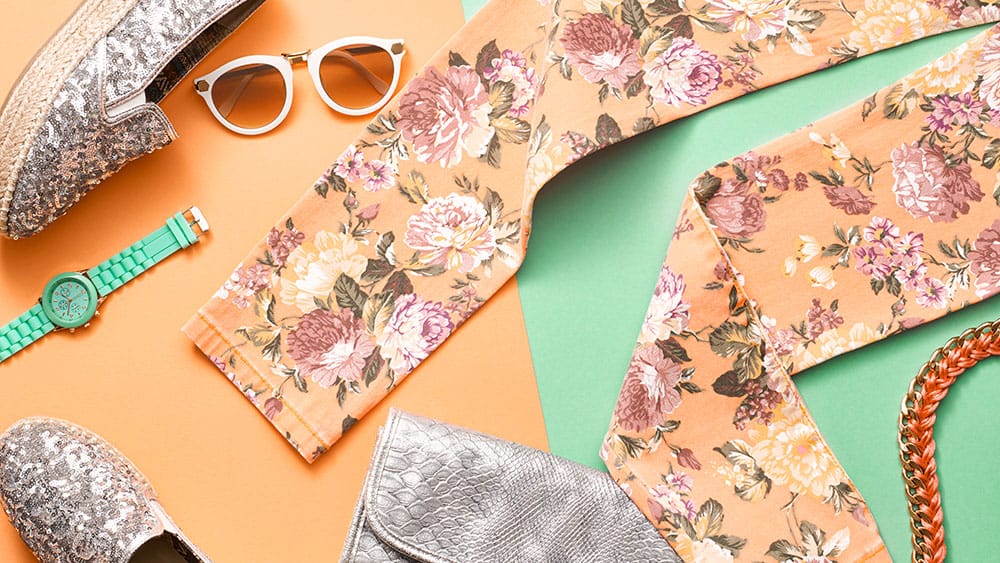
Fashion Influencers and Bloggers Known for Mastering Pattern Mixing
- Chiara Ferragni (@chiaraferragni): The Italian fashion mogul and influencer expertly mixes vibrant patterns, from stripes with florals to plaids with polka dots. Her playful yet polished looks have made her a global style icon.
- Leandra Medine Cohen (@leandramcohen): Founder of Man Repeller, Leandra is celebrated for her fearless combinations of bold prints and textures. She often pairs clashing patterns, such as animal prints with florals, while maintaining a cohesive aesthetic.
- Blair Eadie (@blaireadiebee): Known for her blog Atlantic-Pacific, Blair masters color and pattern mixing with striking combinations like gingham skirts with polka-dot tops, all styled with statement accessories.
- Aimee Song (@aimeesong): The creator of Song of Style blends high fashion with approachable looks, pairing modern patterns like geometric prints with timeless classics like stripes or plaids.
- Camila Coelho (@camilacoelho): Camila frequently incorporates bold patterns into her wardrobe, from tropical prints paired with stripes to graphic patterns styled with neutral elements, creating chic and dynamic looks.
- Tamu McPherson (@tamumcpherson): The Jamaican-Italian influencer and founder of All the Pretty Birds is known for her creative pattern play, effortlessly blending African prints with contemporary European designs.
- Chriselle Lim (@chrisellelim): Chriselle mixes patterns like polka dots with plaid or florals with stripes in a refined, minimalist way, making bold choices accessible and wearable.
These influencers inspire creativity in pattern mixing by showcasing how bold choices, balanced with cohesive elements, can result in standout fashion statements.
Historical and Cultural Influences in Pattern Combinations
The art of pattern mixing in fashion has deep historical and cultural roots, reflecting societal, artistic, and geographical influences over time.
- Historical Inspirations
- Victorian Era: The mixing of florals and paisleys became popular in textiles, showcasing intricate patterns inspired by nature and Eastern designs.
- 1920s Art Deco: Geometric patterns with bold lines and symmetrical motifs emerged, influenced by modernism and technological advances.
- 1960s Mod Fashion: Bright colors and bold graphic prints, such as polka dots and stripes, dominated, reflecting the era’s pop culture revolution.
- Cultural Influences
- African Textiles: Patterns like Kente from Ghana or Ankara from Nigeria showcase vibrant, symbolic prints, often mixed to tell stories or signify identity.
- Asian Motifs: Japanese kimonos feature intricate combinations of florals, geometric patterns, and symbolic imagery, blending tradition and artistry.
- Italian Baroque: Patterns influenced by the ornate art of the Baroque period, such as those used by Versace, incorporate gold filigree, florals, and intricate scrolls.
- Globalization and Modern Fashion
- Contemporary designers draw on diverse cultures, blending patterns like tribal prints with modern geometrics or florals with abstract designs. The fusion reflects the interconnected world of fashion and its celebration of cultural diversity.
By understanding these historical and cultural influences, pattern combinations in modern fashion become a reflection of art, history, and identity.
12. DIY Pattern Mixing
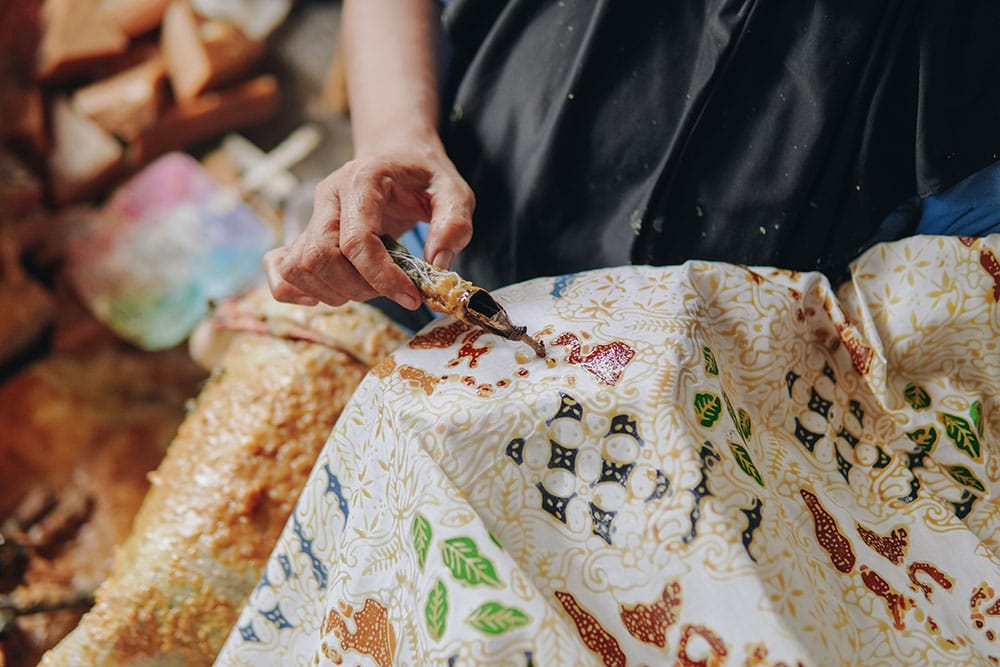
Creating your own patterned pieces or experimenting with pattern combinations is a fun and creative way to personalize your wardrobe while embracing sustainability. DIY pattern mixing allows you to craft one-of-a-kind designs that reflect your individuality and style.
How to Experiment with Patterns in Your Wardrobe
Experimenting with patterns in your wardrobe is an exciting way to refresh your style and showcase your creativity. Pattern mixing allows you to combine bold designs with classic elements, creating visually dynamic and unique outfits. The key is to start small and build confidence gradually.
Incorporate patterns through accessories like scarves or shoes, pairing them with neutral clothing to ensure balance. For beginners, simple combinations like stripes and polka dots in a shared color palette offer a harmonious introduction. As you gain confidence, explore bolder mixes such as florals with geometric prints, using unifying tones or textures to tie the outfit together (Ortiz Pages & Motsiopoulou, 2024).
Experimenting with varying scales, such as pairing a large floral top with a finely striped skirt, adds depth without overwhelming the look. By layering with solid pieces or experimenting with contrasting patterns, you can elevate your wardrobe, making it more versatile and expressive.
Creating Your Own Patterned Pieces: Custom Designs and Upcycling
Designing your own patterned pieces is a creative way to personalize your wardrobe while embracing sustainability. By customizing or upcycling existing garments, you can craft unique designs that reflect your individuality and reduce waste.
Custom designs allow you to experiment with motifs, colors, and textures. Techniques like block printing, tie-dye, or fabric painting let you add personal touches to plain clothing, transforming them into one-of-a-kind statement pieces (Ortiz Pages & Motsiopoulou, 2024). For a cohesive look, start with simple patterns and expand to bolder designs as you gain confidence.
Upcycling old clothes by combining fabrics with different prints is another great option. For example, adding a patterned patch to a denim jacket or creating a skirt from fabric scraps not only refreshes your wardrobe but also celebrates creativity and sustainability. These DIY projects empower you to mix and match patterns in ways that truly represent your style.
Building Confidence through Trial and Error
Confidence in pattern mixing comes from embracing a process of trial and error. Experimenting with different combinations allows you to discover what works for your personal style while honing your sense of balance and creativity.
Start by pairing simple, classic patterns like stripes and polka dots in neutral tones. Gradually introduce bolder designs, such as florals or geometric prints, to see how they interact with your existing wardrobe. Mistakes are part of the learning process—use them as opportunities to refine your eye for scale, color coordination, and harmony (Ortiz Pages & Motsiopoulou, 2024).
Documenting your outfits or trying new combinations at home can help build confidence before stepping out. Over time, you’ll develop a keen intuition for creating cohesive and stylish looks, turning pattern mixing into a natural extension of your fashion repertoire.
13. The Role of Confidence in Pattern Mixing
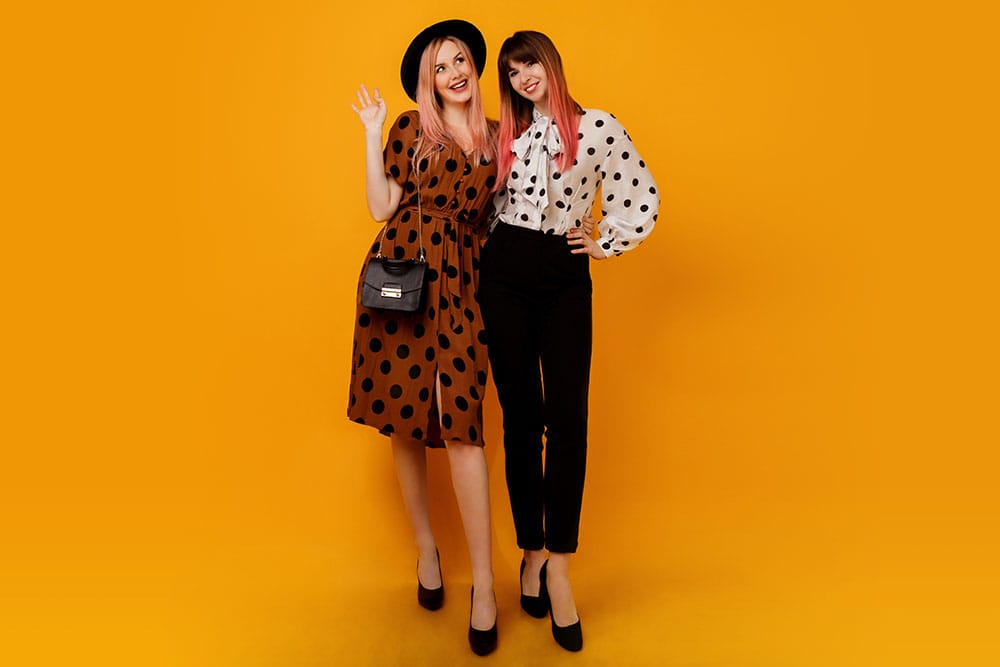
Confidence is the cornerstone of mastering pattern mixing. While the technical aspects—like balancing scale, color harmony, and proportion—are essential, the ability to wear bold combinations comes down to believing in your choices and owning your style.
Embracing Individuality and Expressing Personality
Pattern mixing is a powerful tool for embracing individuality and showcasing your unique personality through fashion. By combining prints, textures, and colors in innovative ways, you can create outfits that reflect your tastes, mood, and creativity.
Mixing patterns allows for self-expression without the constraints of traditional styling rules. Whether pairing bold animal prints with florals for a daring look or subtle stripes with polka dots for understated charm, each combination tells a personal story (Meng & Ghosh, 2024). Experimenting with different scales and themes further enhances this individuality.
Ultimately, pattern mixing is about confidence and authenticity. By embracing your preferences and letting your style evolve, you can use fashion as a canvas to celebrate your personality and make a statement that’s uniquely yours.
How to Own Your Style Choices with Bold Patterns
Owning your style choices with bold patterns requires confidence, creativity, and a sense of personal expression. Bold patterns, like oversized florals, animal prints, or striking geometric designs, make a statement, and embracing them shows a willingness to stand out.
Start by building your look around one bold pattern, anchoring it with neutral or subtle elements to maintain balance. For example, pair a vibrant patterned blazer with solid-colored pants, letting the bold piece take center stage (Ortiz Pages & Motsiopoulou, 2024). Accessorize thoughtfully, using minimalist jewelry or bags to complement rather than compete with the pattern.
Most importantly, trust your instincts. Fashion is about celebrating individuality, and wearing bold patterns with confidence transforms your outfit into a personal style declaration, empowering you to own your look unapologetically.
Overcoming Fear of Standing Out
Fear of standing out can often hold people back from embracing bold style choices, including pattern mixing. Overcoming this requires a shift in mindset and gradual experimentation. Start small by introducing subtle patterns, such as polka dots or thin stripes, and pairing them with neutral tones. As you grow more comfortable, incorporate bolder designs like florals or geometrics in one key piece, such as a jacket or skirt (Meng & Ghosh, 2024).
Focus on how your outfit makes you feel rather than how others might perceive it. Confidence comes from wearing what resonates with your personality and values. Remember, standing out through fashion is an opportunity to express yourself, and celebrating individuality is always in style.
- Deepen the discussion on sustainability with examples of thrifted and upcycled patterns.
- Include data from Depop and Poshmark on the rising demand for vintage-patterned clothing and their alignment with circular fashion goals.
14. Sustainability and Pattern Mixing
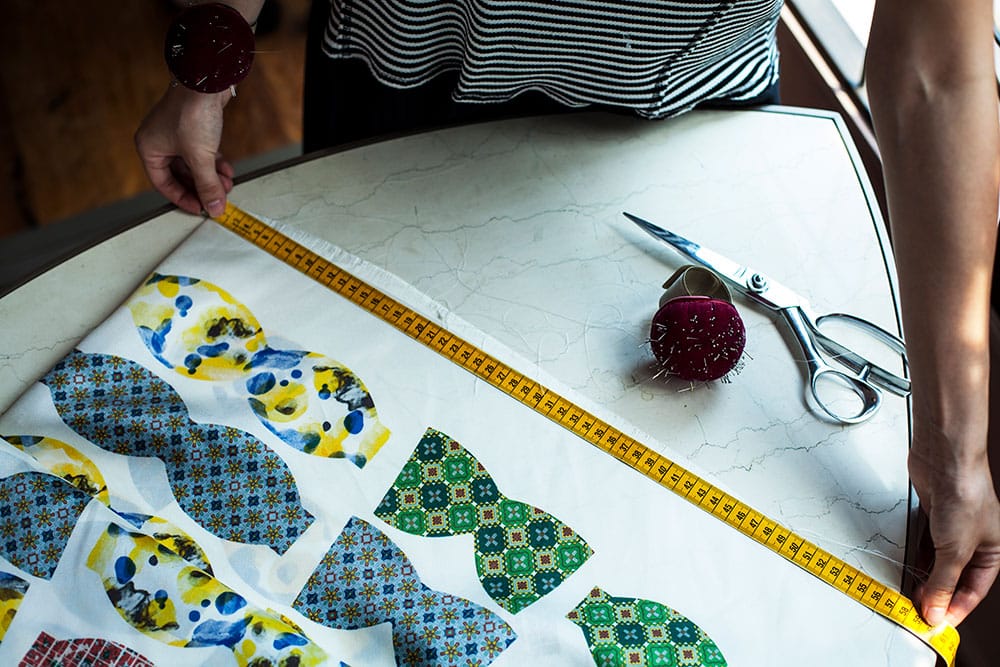
Pattern mixing is not only a creative styling technique but also a practice deeply aligned with sustainability. By reimagining how garments are used and styled, pattern mixing supports eco-conscious fashion choices while reducing waste and promoting thoughtful consumption.
How to Shop Sustainably for Patterned Clothing
Shopping sustainably for patterned clothing involves mindful choices that prioritize the environment and ethical production practices. Opt for secondhand or vintage stores where unique, high-quality patterned pieces can be found, reducing demand for fast fashion. Thrifted items, such as floral dresses or striped shirts, often carry timeless appeal and are more environmentally friendly (Ortiz Pages & Motsiopoulou, 2024).
When buying new, choose brands committed to sustainable practices, using organic fabrics, non-toxic dyes, and ethical labor. Look for versatile patterns that can be easily mixed with your existing wardrobe, maximizing wearability. Additionally, consider quality over quantity—invest in durable, well-made pieces that stand the test of time.
By shopping sustainably, you can enjoy stylish patterned clothing while supporting a more ethical and environmentally conscious fashion industry.
Mixing and Matching Thrifted or Vintage Patterns
Thrifted and vintage clothing offers a treasure trove of unique patterns that can be mixed and matched for truly one-of-a-kind outfits. These pieces often feature timeless designs like florals, paisleys, or retro geometrics, which lend themselves well to creative combinations.
When mixing thrifted patterns, focus on a unifying element such as color palette or texture to maintain cohesion. For example, pair a vintage floral blouse with a striped skirt that shares complementary tones. Layering with modern, solid-colored items can balance the look and update older patterns for a contemporary feel.
Shopping secondhand not only supports sustainability by reducing waste but also encourages individuality, as no two finds are the same. By experimenting with thrifted and vintage patterns, you can create outfits that celebrate creativity, history, and environmentally conscious fashion.
Extending Your Wardrobe by Re-styling Patterned Pieces
Re-styling patterned pieces is an effective way to extend your wardrobe and maximize its versatility. A single patterned item, such as a floral blouse or plaid trousers, can be transformed into multiple outfits by pairing it with different items or layering creatively.
For casual days, pair a patterned top with denim or neutral pants to keep it understated. For a bold look, mix it with complementary patterns, like stripes or polka dots, ensuring the colors align for harmony. Layering, such as adding a solid cardigan or blazer, can transition a piece from day to night or from one season to another.
Accessorizing differently, like swapping sneakers for heels or adding a scarf, also gives the same piece a fresh perspective. Re-styling not only breathes new life into your wardrobe but also promotes sustainability by reducing the need for constant new purchases.
- Summarize the technical aspects, cultural influences, and sustainability benefits of pattern mixing.
- Reinforce how mastering these principles empowers individuals to experiment confidently while contributing to eco-friendly fashion practices.
15. Conclusion
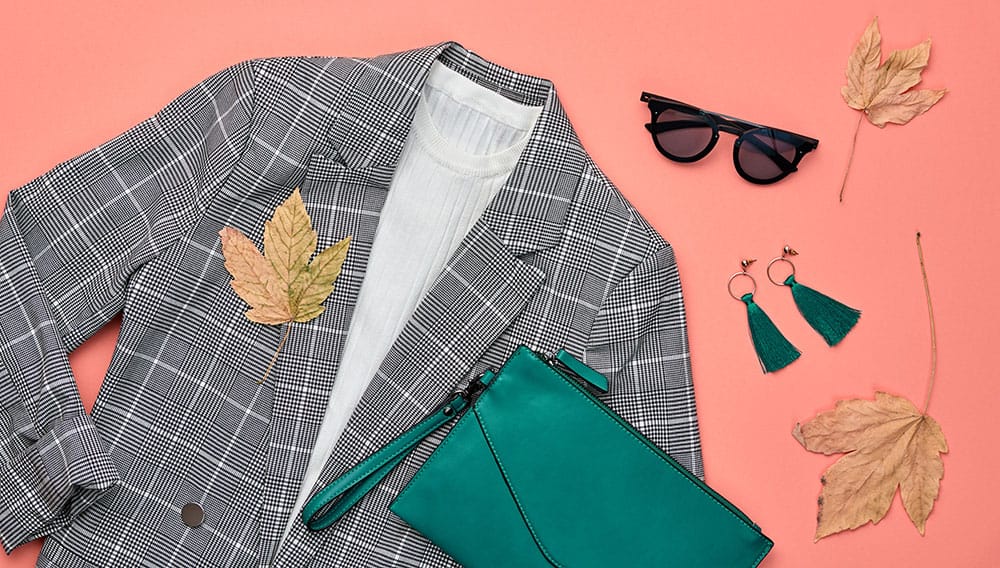
Pattern mixing is an art that combines creativity, balance, and personal expression. To master it, start with a unifying element like a shared color palette or texture, ensuring patterns complement rather than clash. Balancing scales—pairing large prints with smaller ones—adds harmony and avoids visual overwhelm. Incorporating solid pieces or neutrals anchors bold patterns, providing contrast and cohesion.
Experimentation is key; begin with simple combinations, such as stripes with florals, and gradually explore bolder mixes. Consider the occasion, setting, and your body proportions to tailor pattern choices effectively. Lastly, embrace your individuality, using pattern mixing to reflect your personality while supporting sustainable fashion practices, such as re-styling or upcycling.
By following these principles, you can confidently create stylish, dynamic outfits that celebrate the endless possibilities of pattern mixing.
Encouragement to Experiment and Have Fun with Fashion
Fashion is a powerful form of self-expression, and pattern mixing offers endless opportunities to showcase your creativity and individuality. Don’t be afraid to step outside your comfort zone—experiment with bold combinations, play with colors, and embrace the unexpected. Mistakes are part of the journey, and every attempt brings you closer to finding what resonates with your style.
Remember, there are no strict rules in fashion; it’s all about what makes you feel confident and authentic. Celebrate your unique tastes, have fun with your choices, and let your wardrobe become a canvas for your personality. The beauty of fashion lies in its ability to evolve, and every outfit is a new opportunity to express who you are.
How Pattern Mixing Enhances Creativity and Personal Expression
Pattern mixing is a vibrant avenue for exploring creativity and showcasing individuality. By combining unexpected designs—like florals with stripes or geometric prints with polka dots—you challenge traditional styling norms and create unique visual narratives. This process sparks creative problem-solving as you balance colors, scales, and textures to craft harmonious yet bold ensembles.
Moreover, pattern mixing allows for personal expression, offering a way to reflect your mood, preferences, or cultural inspirations through fashion. Whether opting for playful combinations that radiate energy or sophisticated pairings that exude elegance, the choices you make highlight your unique perspective. This freedom to experiment transforms fashion into a dynamic art form, where each outfit becomes a reflection of your creativity and authenticity.
Continue Reading:
How to Mix and Match Patterns for Outfit / Part 1
How to Mix and Match Patterns for Outfit / Part 2
Written by: Alireza Bahram
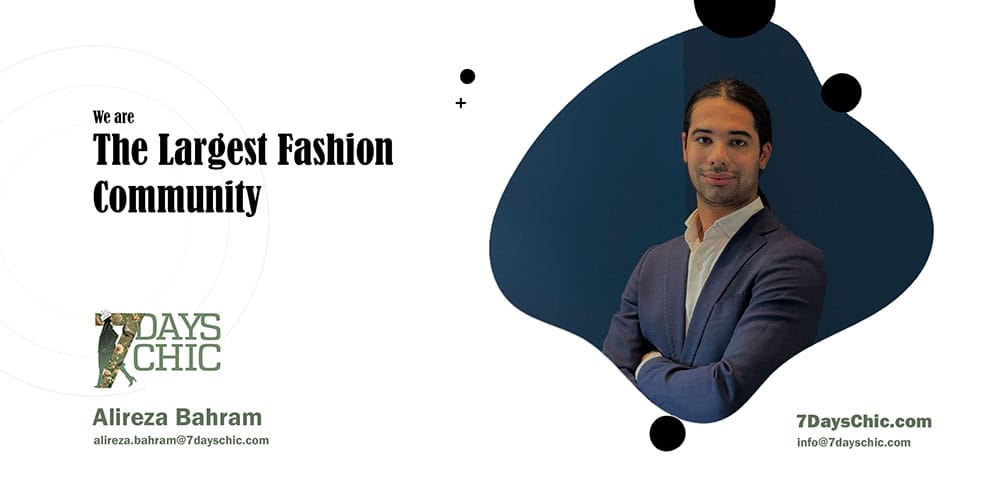


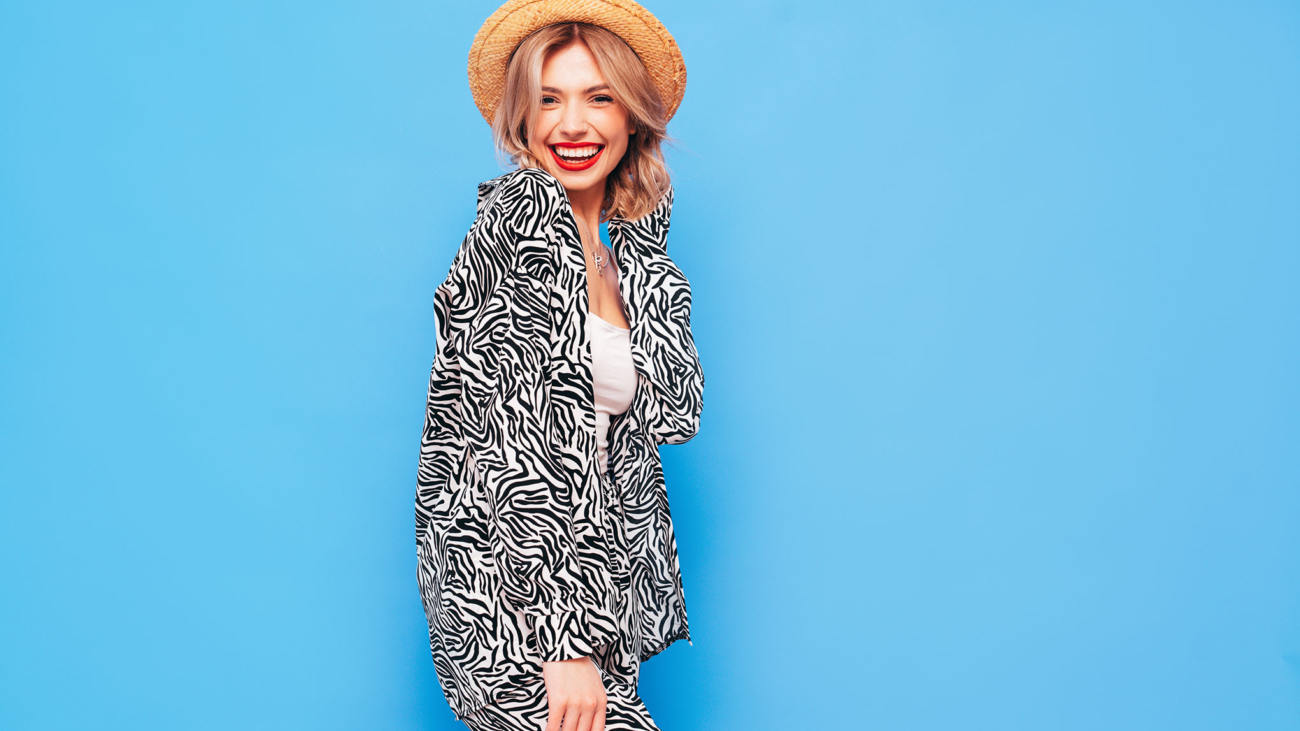
Add a Comment